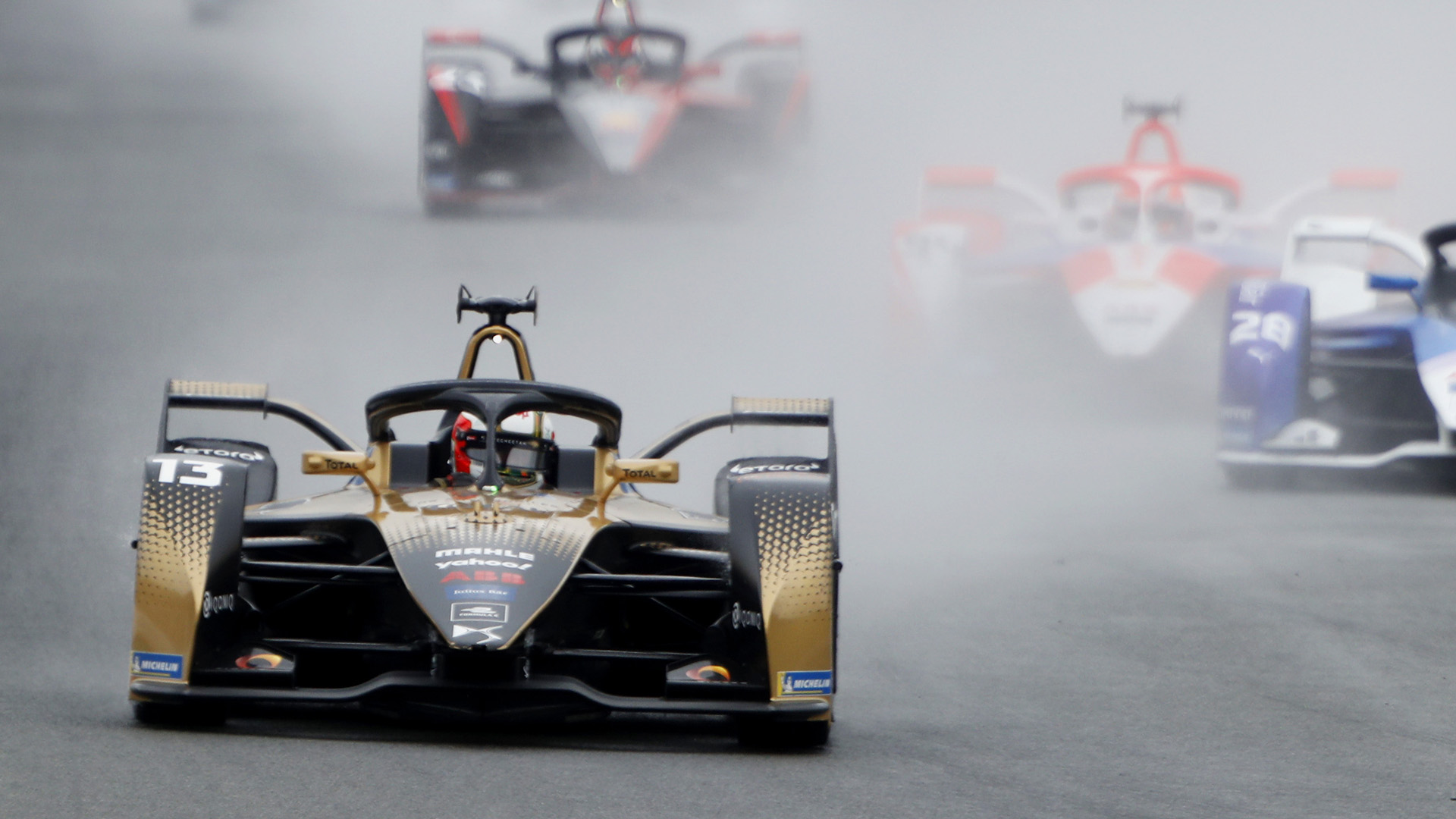

Formula E has never shied away from the fact that battery-electric cars have a finite amount of onboard power. Despite how limited that amount originally was, there have been a surprisingly low number of times cars have stopped on track due to energy shortage over the series’ seven seasons. In fact, Mitch Evans losing out in the 2018 Rome EPrix due to a miscalculation really sticks out as the only time it’s made a difference in a race result.
Just like with gasoline or diesel-powered race cars, the idea is to get the most out of whatever you have at your disposal and, needless to say, professional racing teams are very good at that. In Formula 1 you’re allowed 220 pounds of fuel burned per race, but if you can get around at a competitive pace with only 187 pounds, then your car will be lighter and faster.

Batteries don’t meaningfully weigh less when not charged, so the gamble is slightly different (and in any case, it’s mandatory to start with them at 100%), but Formula E has the same tactical game: get to the end having used everything you could, the best way you were allowed. You want to end with the perfect 0.01% remaining as you cross the checkered flag.
Formula E was doing some unusual stuff this weekend even by its fairly irregular standards. It’s always been wedded to street circuit racing but the pressures of COVID have forced calendar adaptations that saw the circus arriving at Circuit Ricardo Tormo, Valencia, rather than a city center. It’s a familiar track to Formula E because it’s used for pre-season testing, where everyone unanimously agrees it’s the opposite of a Formula E circuit, teams actively doing setup work against it, almost.
It’s flowing, fast, a MotoGP circuit without any of the hard braking zones Formula E relies on to regenerate energy, so it was always going to be seriously tough on energy and run the risk that teams could make a mistake—but that’s racing. Same as an ill-timed pit stop, sometimes racing really is just like that and it’s all part of what makes it sporting, as well as a technical exercise in vehicle performance.
What happened on Saturday is harder to explain. Starting behind the safety car in wet conditions, Formula E set off for 45 minutes of racing. Or rather, should have; the first of five safety cars occurred after just half a lap of racing, when André Lotterer punted Sebastién Buemi into the gravel, prompting a drive-through penalty for the former and retrieval via tractor for the latter.
This brought the total time under caution to 19 minutes of 45. At some races, that might be considered an achievement given the number of incidents caused by the wet running but it also flagged up a rule most people probably haven’t noticed in FE’s current race format.
For every minute spent behind the safety car, a kWh of the usable energy cars start with is reduced. It was a change made last season to stop teams gambling for safety cars and overusing; ironically, specifically to mitigate the risk of them taking chances or stopping on track by removing the benefit of a safety car.
On a normal street circuit, it works and cars cross the line with zero usable energy remaining. In Valencia, even at a reduced pace behind the multiple safety car, drivers weren’t able to save significant amounts of energy because of the nature of the lap layout. So once a final reduction was applied, with two minutes to go, cars were left obviously short.
Antonio Felix da Costa, who’d led the whole race, was left to helplessly cross the start/finish line with 15 seconds remaining in the 45 minutes of race time, sending cars for another two laps. A lot ran out on track, some crawled home and as Da Costa’s energy faded, Nyck de Vries was able to nurse himself back to the chequered flag on an agonizingly slow victory lap.
The cars that made the podium had to be pushed there, one of them Stoffel Vandoorne—who had been running in 17th at the point the race restarted. Mercedes was praised by the FIA for “good management” of energy, but given both cars edged their way home at speeds last seen at a golf course, it was hardly a triumph of wisdom over adversity.
In the end, cars had 33kWh of their starting 52kWh that was possible to be used and a lot of them exceeded it. The final finisher in the race, Jean-Éric Vergne, was dead last. So last that he was still finishing his final lap—an agonizing 5:48.117 crawl around the two-mile circuit—while the winner was doing his podium interviews. He came ninth, the other 15 cars ended their race on the track or in parc fermé after disqualification. And the really weird thing about it all is that most of them, of course, had about 40% of the electricity they started with still left in their batteries.
Formula E managed a much, much more sensible race on Sunday—without any safety cars at all—and proved that it actually can look good on a permanent circuit, even one that suits it so incredibly poorly. So; don’t assume this is what Formula E is, rather than a bizarre aberration caused by a conflict between rules and what the series is currently having to work around—but it definitely wasn’t a good look, either.
Got a story tip? Mail me on hazel@thedrive.com